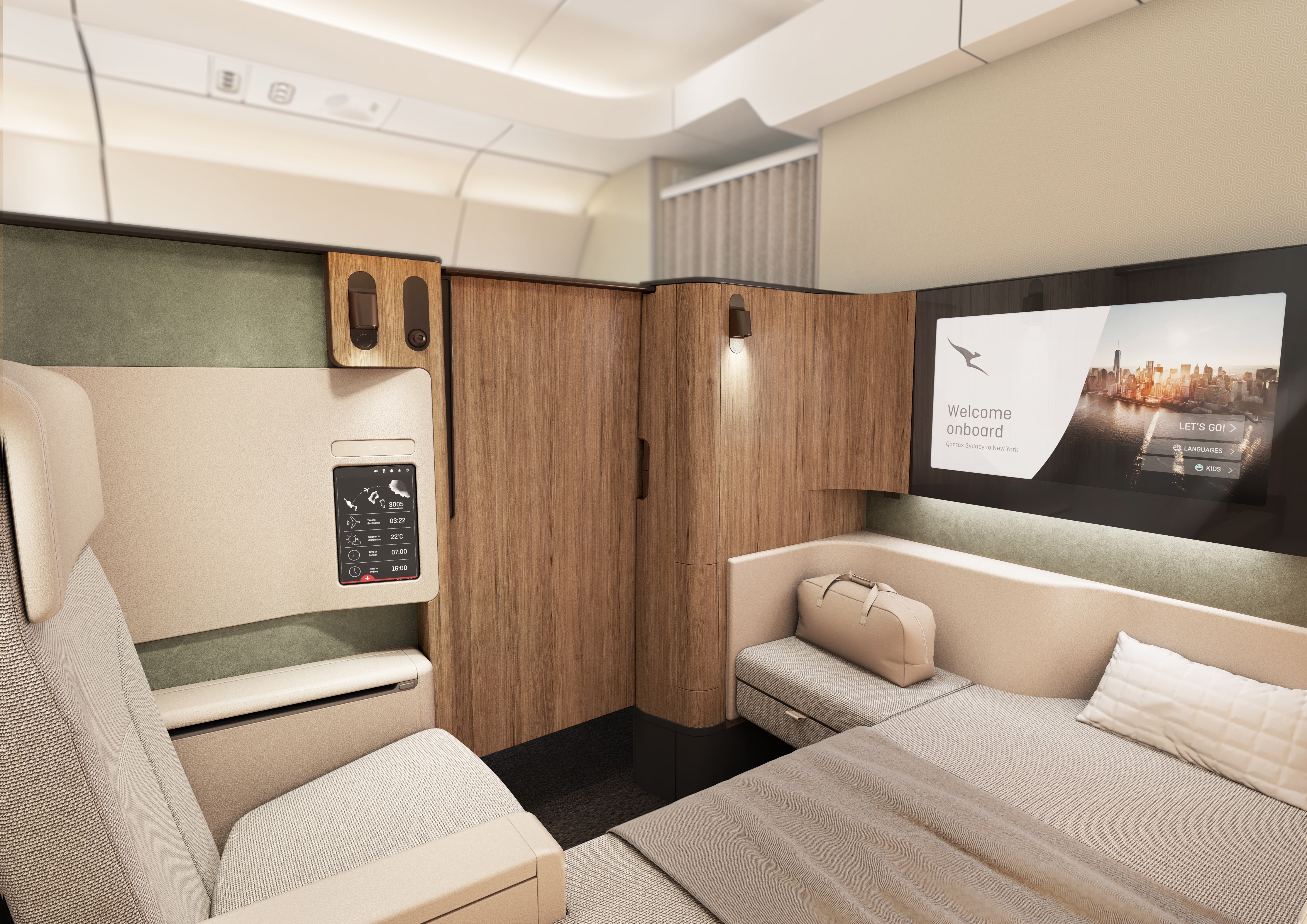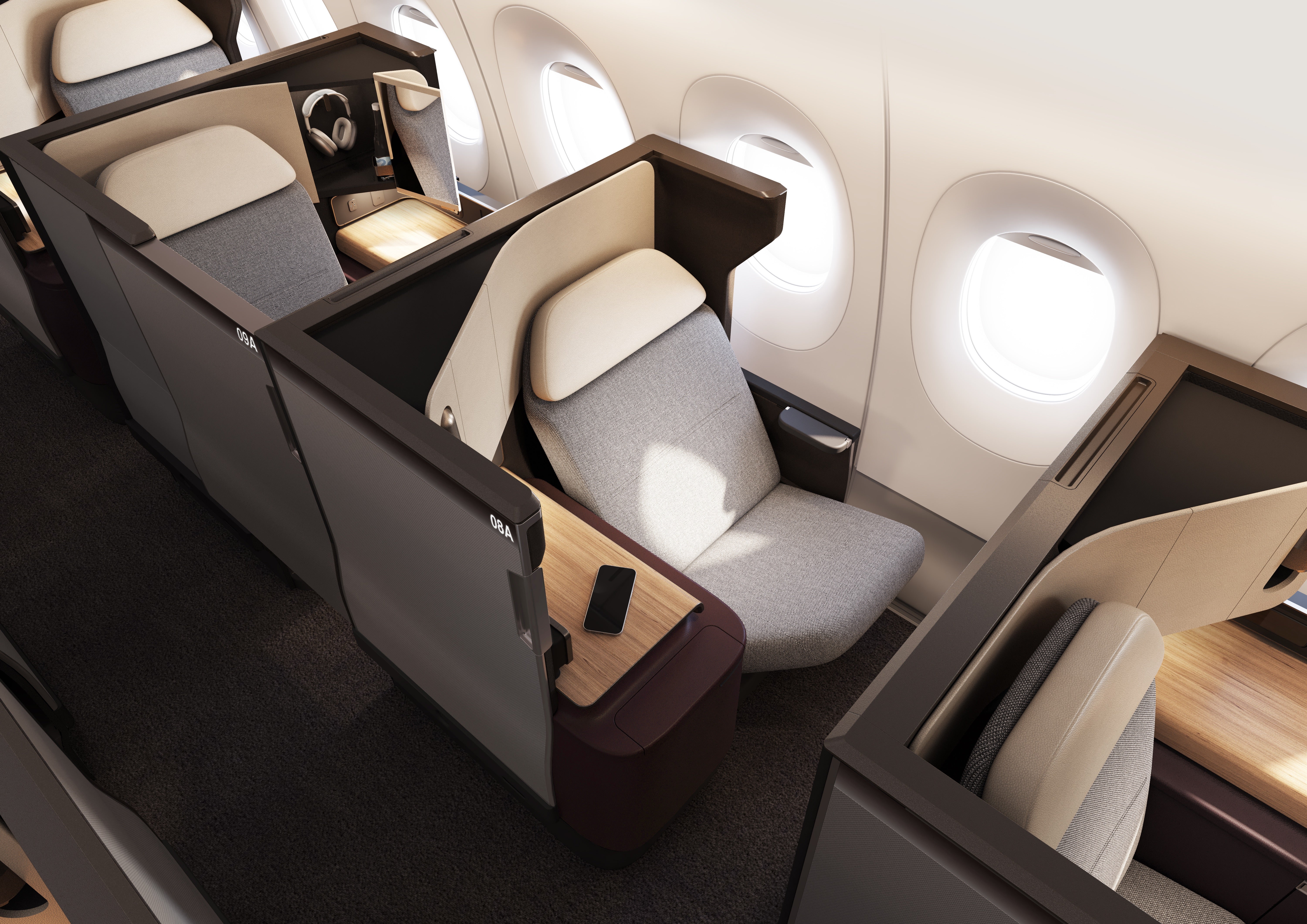Qantas hopes to end ‘tyranny of distance’ for Australians with world’s longest flight
The aircraft for the 19+ hour Qantas flights will arrive by mid-2026
Qantas is one step closer to taking the title of running the world’s longest flight, which bosses hope will further open up the world to Australians.
The development of the Australian airline’s ‘Project Sunrise’ has been almost seven years in the making. The plan is to create a non-stop flight from Sydney to London and New York, but the aircraft used for the flight will still not arrive until mid-2026.
Despite delays due to the pandemic and Airbus orders, Vanessa Hudson, who took over as Qantas CEO last autumn, spoke at an airline event in September in a hangar in LAX and said that the project speaks to “Australians’ hunger to fly point to point”.
The upcoming long-haul flights will be “a great way for Australians to break out and see the world on the A350”.
“This will set the tyranny of distance as a thing of the past. It’s going to enable us to fly from Sydney and Melbourne to New York direct and also to London direct,” Hudson added.
Hudson also said that the current Qantas 17-hour long-haul flights from Perth to Europe “continue to perform strongly, giving us increased confidence about Project Sunrise”.
Part of Qantas’ next phase of development is looking at how to minimise jetlag on ultra-long-haul flights, including analysing how to use different light settings to emulate various times of the day, and introducing a “wellbeing zone” featuring blue-enriched lights that will create slow-moving clouds, moonlight and water reflection projections.
“We’re working with the Charles Perkins [Research] Centre in Sydney on really thinking about how to reimagine that next long-haul experience,” Hudson said at the LAX event.

“How do we understand the circadian rhythms of the body? How do we prepare with light in the cabin, with food, with rest? We’re going to be working with a number of frequent flyers over the coming weeks to help us understand and research that a bit more.”
The 12 brand-new Airbus A350s used in the Project Sunrise fleet will carry 238 travellers in spacious, ergonomically designed cabins, with passengers in first-class suites enjoying an extra-wide fixed bed, as well as a separate recliner chair, personal wardrobe, a 32-inch TV and a dining/work table for two.
There will also be 40 premium economy seats and a 140-capacity economy cabin on board.
Singapore Airlines currently holds the title for operating the world’s longest nonstop commercial flight, which run between Singapore and JFK in New York and take between 18 and 19 hours. Qantas’ Project Sunrise hopes to usurp this with its flight time of around 19+ hours.
The airline currently operates a one-stop flight via Singapore, but the Project Sunrise flights will become the longest air link in the world, with the airline describing the London-Sydney route, which covers 10,573 miles, as “the final frontier of long-haul travel”.

Qantas was considering the Boeing 777X for Sydney to London and New York, but has placed an order for up to a dozen specially adapted Airbus A350-1000 jets.
The original plan was for the ultra-long-haul flights to begin in early 2023, but the Covid-19 pandemic set the project back
The project was again delayed due to an Airbus manufacturing hold-up after it was asked by a regulator to redesign the plane’s centre tank, causing the unveiling date to be shifted to 2026, almost a decade after the plan was announced.
Project Sunrise’s name was inspired by the airline’s double sunrise endurance flights during World War Two, which remained in the air so long that they saw two sunrises.
For more travel news and advice, listen to Simon Calder’s podcast
Join our commenting forum
Join thought-provoking conversations, follow other Independent readers and see their replies
Comments
Bookmark popover
Removed from bookmarks